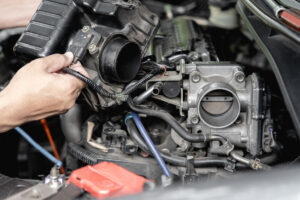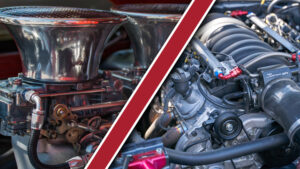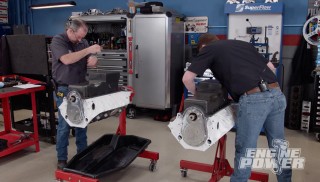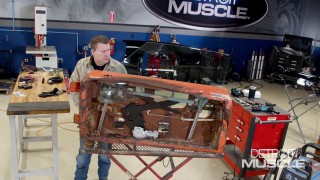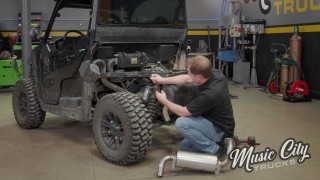Settling the Debate of Paint Vs. Patina With a Paint Specialist
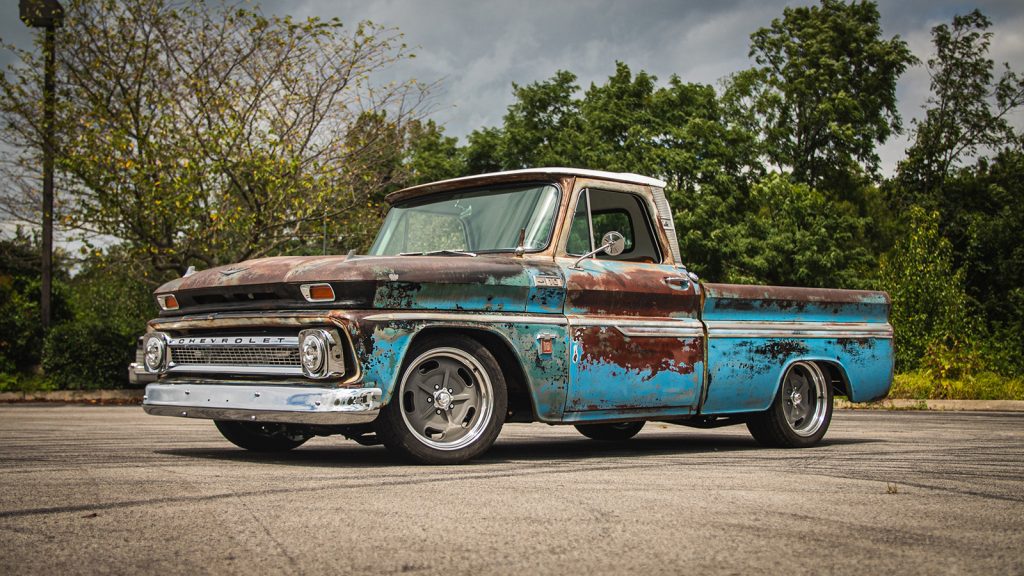
One of the age old questions when it comes to car restoration is paint versus patina, and with the guidance of Ted Swan, painting specialist with Summit Racing, we hope to settle that debate today.
While it all comes down to a matter of personal preference, sometimes we might wonder which adds more value. Sure, that shiny hunk of metal outside glowing under the natural sunlight looks pretty sweet, especially when the sun starts setting and you can see it for all its glory, but is it possible that restoring that rust bucket actually kills the value? Well, that all depends on the application, according to Mr. Swan.
Generally speaking, a nice coat of paint and bodywork will increase the value of a car and make the public take notice. One example of that is a ’70s era El Camino that’s tastefully lettered – it attracts attention. Drastically reducing the value of a car will only occur when you have an extremely rare car, but in the case of the 1969 Hellcat Charger Restomod, the value can skyrocket.
A nice paint job will increase the value if you document the process with photos. Some cars, especially ones with low miles, and low production muscle cars are better left alone.
Patina Keeps Classic Intact
While some of you may disagree, which is what makes this industry so fun because we all have differing opinions on these topics, there are situations where patina IS the better option.
Why? As was mentioned above, vehicles are sometimes more valuable when they’re left alone, and you should think twice or ask an expert before considering a paint job on your classic rig. Preserving specific automobiles does more than just keep their value intact, it preserves a piece of time that otherwise doesn’t exist anymore.
Here are some examples of historical cars that have been left alone and skyrocketed in value:
- Bruce Meyers Manx Dune Buggy
- Gypsy Rose
- Shelby Cobra Daytona Coupe (CSX 2287)
Their history is like a time capsule that transports us back to another age, and by altering its appearance, we lose that ability to see what those days brought. For example, the wear on the first Grand National Roadster Show Mack Model T that sits in a museum in Boyertown, PA, would be ruined by a fresh coat of paint. Old isn’t necessarily “bad,” as there is beauty in age.
Hemi Cuda produced fewer than 800 vehicles in 1970 and 1971, meaning they’re valuable when maintained. Restoring these cars would be similar to filling in the cracks of the liberty bell. If you’re seeking the perfect car with a gloss finish, you’re better off building a replica.
Asking the Professional: Paint or Patina?
“It’s completely dependent on the application,” according to Mr. Swan. A real patina, an artful patina, as long as the car is safe and not rusted out, can get your project back on the street much faster in most cases. You can’t estimate how much less expensive something is in that condition because no labor is involved.
Patina jobs don’t require bodywork, precision sanding, and don’t get cut or buffed, allowing for it to get on the street faster than attempting the perfect black paint job. According to Mr. Swan, a reliable visual reference of perfect black paint would be an Alloway’s Hot Rod Shop car, like the Chevelle they recently finished, or the Rick Dore car, the Black Pearl. Both vehicles are reliable standards of “as good as it gets” black paint. They strive for perfection and have many hours to arrive in this state, whereas normal paint jobs, even with wild colors, can be completed in about a week.
For example, if someone with an older sports car said they wanted to paint it, they’re probably better off just driving the car and enjoying it. The show car world can be cruel, and some people are purists that want to preserve it from the factory. As nice as it is to see a bright vibrant color on a classic car, sometimes paint should be left alone solely for its history, and not just its potential value.
When To Paint a Car
This section is where there is no right or wrong answer – one person may tell you to paint your car – while another, like Mr. Swan, will tell you to keep it intact to preserve its historical value, despite his expertise on the topic. With that said, it really comes down to preference and what you’re trying to achieve.
If you love the car and want it to look a specific way, you should paint it the color of your choice. In some cases, the person doesn’t care if it affects the value and prefers it to be painted the color they love because it isn’t always about what the car is worth, it’s about what it means to you.
Paint or Patina?
These are the questions that keep people in our industry up at night. You can ask five different people the same question and get five different answers. Why? Because there is no right answer – the “right” answer has so many variables.
If you’re building a car that’s based on your vision, then it’s going to take the shape of what you’re into. For example, if you grew up around patina and always wanted a patina’d car, then you might not care too much about the value because that’s what you want. However, if a shiny restored classic car appeals to you, then that’s the route you’ll take.
If you’re looking to break into the show car world and you’re not sure about what to do, it’s best to consult a professional if you’re concerned about harming the vehicle’s value. As was mentioned above, if you’re in possession of an older muscle car that produced very few cars, the best option might be to leave it alone.
The best advice we can offer is to speak with someone with knowledge on the topic and explain your objective to them. If you’re looking to restore its history, don’t touch it, but anything else, it may warrant a top-notch paint job.
Want to read more articles like this?
Join the PowerNation Email NewsletterRead More from PowerNation
- Chapters
- descriptions off, selected
- captions off, selected
This is a modal window.

